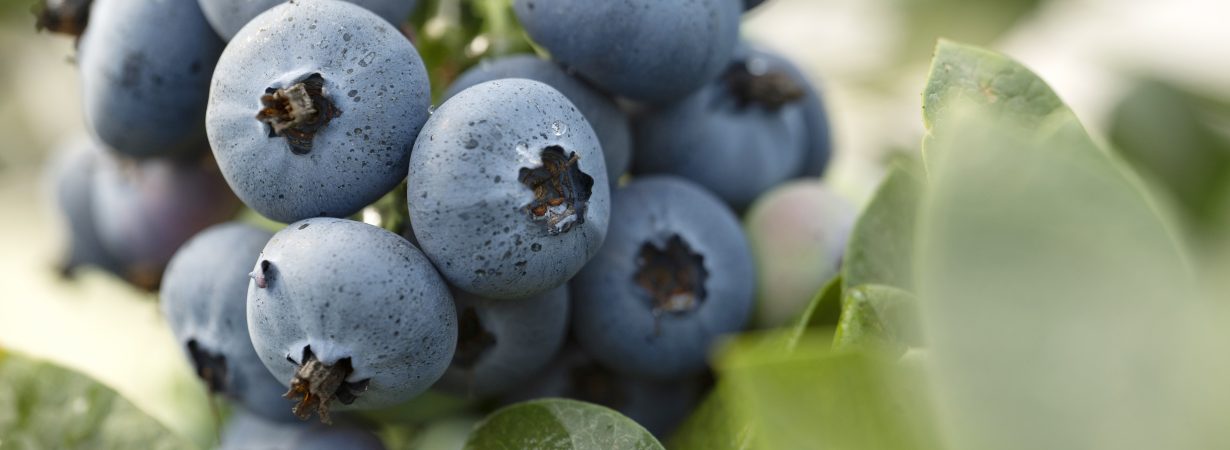Global Fresh Blueberry Outlook 2025–2030
- . April 14, 2025
The global blueberry sector is entering the latter 2020s with unprecedented production capacity and a more geographically diverse supply base than ever before, EastFruit analysts point out. Global planted area expanded, according to various estimates, is growing at least by 10% each year and the total output, according to industry sources such as IBO, has more than doubled in the recent 10 years reaching 1.78mn tons in 2023 and exceeding 2.0mn tons for the first time in history in 2024.
“Although global blueberry production is nearly 50 times smaller than that of apples, the volume of international trade in fresh blueberries is only about 20% lower. Initially, most major blueberry-producing countries focused primarily on export markets. However, this is now beginning to change,” says Andriy Yarmak, Economist at the FAO Investment Centre. “Unlike apples, blueberries can be successfully cultivated in a wide range of climates, allowing for production in many more countries. As a result, the rapid expansion of blueberry production in countries targeting primarily their domestic markets often goes unnoticed at the global level and may cause significant market disruptions in the future.”
“This suggests that the real pace of global blueberry production growth may, in fact, be even higher than currently estimated. In the coming days, the EastFruit team will launch a series of in-depth analytical articles exploring the development potential of the blueberry sector — both globally and regionally — with a particular focus on 2025 and the longer-term outlook. We will aim to provide detailed insights into every country that deserves attention within this rapidly evolving industry.”
Global production increase in the recent decades has been driven by surging plantings in Latin America, Europe, and especially Asia where it was led by China. Despite this rapid growth, industry experts maintain that demand growth potential remains strong – the international blueberry market’s “potential is far from exhausted,” with fresh blueberry consumption still rising in many markets. However, macroeconomic headwinds like inflation, high logistics costs, deglobalization and labor shortages are creating new challenges in balancing supply and demand.
Global Production and Trade Trends (2025–2030)
Worldwide blueberry acreage and output have sustained a remarkable growth trajectory. By 2023, global blueberry cultivation area jumped to 267k hectares (up 7.2% from 2022) (Global blueberry production rises despite 12% export decline), continuing a steady climb from ~201k ha in 2019. Latin America now accounts for the largest share (42% of world acreage), reflecting huge investments in countries like Peru, Mexico, and Chile.
The Asia-Pacific is not far behind, with China’s explosion in planting making it the single biggest producer by volume (Global blueberry production rises despite 12% export decline). Global production in 2023 reached 1.78 million tonnes, with China, the United States, and Peru contributing a combined 88% of output. Notably, China alone now produces about 32% of the world’s blueberries, having overtaken the U.S. as the top producer in 2021.
The year-round availability of fresh blueberries (thanks to the spread of Southern Hemisphere production and greenhouse cultivation) has firmly established blueberries as a global commodity, with supply present in all 12 months of the year.
On the trade side, fresh blueberry exports have generally trended upward alongside production – averaging ~10% annual growth (about +60,000 tons/year) from 2019 to 2023 (Georgia, Zimbabwe, Ukraine – The Rise of New Blueberry Giants). Even logistical disruptions and higher costs in recent years did not halt trade growth entirely, as exporters found ways to meet rising demand in new and existing markets.
However, soaring domestic consumption in producer countries (e.g. China and the U.S.), may keep more fruit away from international trade. The United States and Europe remain massive blueberry consumers – the U.S. and the Netherlands together took 48% of world imports in 2023 (the Netherlands serves as a hub for Europe). But with production outpacing export growth, prices and profitability have come under pressure.
Read also: From Ukrainian Fields to Global Markets: Ukrainian Blueberry Producers Unite Despite the War
Blueberry import prices have shown a mild downward trend since 2018, reflecting abundant supply and fierce competition. Industry reports note “rising competition and escalating costs”, along with supply/demand imbalances, as key challenges ahead. Growers worldwide face margin squeeze from higher input costs (fertilizer, energy, logistics) and labor shortages, even as buyers expect affordable prices. Ensuring quality and maintaining blueberries’ premium image is an increasing focus amid this glut.
Despite these challenges, demand indicators remain positive for the long term. Blueberries are gaining popularity due to their convenience and health benefits, and greater availability has made them more accessible year-round. In fact, consumption has been growing even faster than trade in some regions – helped by falling prices and the incorporation of blueberries into processed products (yogurts, juices, baked goods), which in turn familiarizes more consumers with the fruit. This virtuous cycle suggests that as global production continues rising, new consumers and markets will emerge to absorb the fruit. The key will be navigating short-term economic turbulence while continuing to stimulate demand in both established and emerging markets. Fresh blueberries are already taking away market share from the traditional fruits, including apples and this trend is likely to continue.
In the following publications, we delve into the outlook for the leading fresh blueberry exporting countries through 2030, followed by a look at aggressive new entrants, and an analysis of how macroeconomic factors might alter consumption and production dynamics.
14.04.2025
Fuente: east-fruit.com





